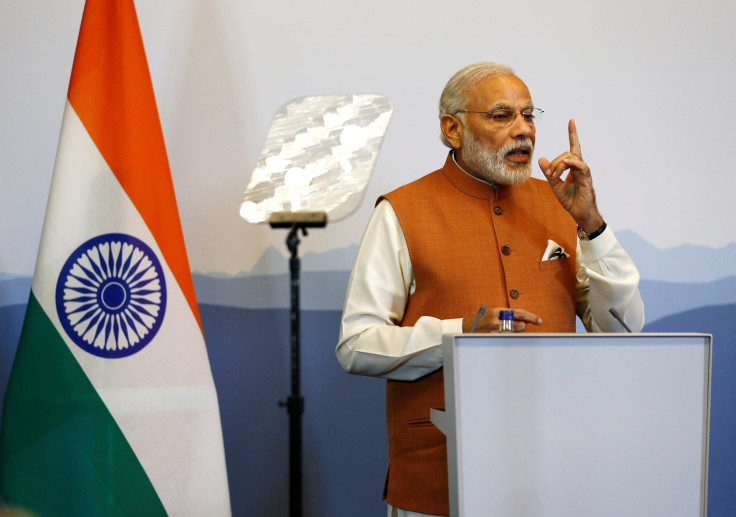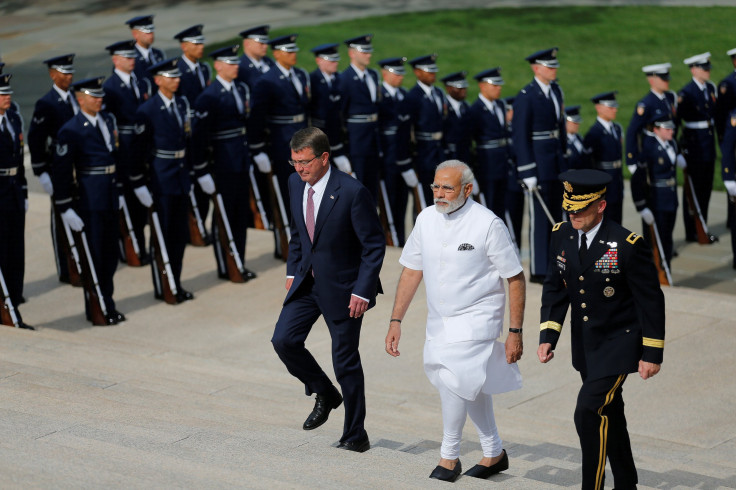Narendra Modi-Barack Obama Meeting: Climate Change, Defense Ties To Figure In Talks

India’s Narendra Modi began his three-day trip to the United States Monday — his fourth as the country’s prime minister. On Tuesday, the Indian leader will meet U.S. President Barack Obama, which will be followed by an address to a joint session of Congress.
A key issue that the two leaders are likely to discuss is climate change. India and the U.S. are among over 170 countries that signed the Paris climate agreement, but are yet to join the accord — which involves making commitments to adhere to the emissions reduction pledges outlined in it. The two countries together account for over 20 percent of the world’s greenhouse gas emissions and their joining is thus important for the treaty to come into effect.
However, while the U.S. has pledged to join as soon as possible, India has made no such public pronouncements, underscoring a concern the Modi-led government has aired in the past regarding the perceived lack of “common but differentiated responsibilities.”
The Paris climate pact, which has, so far, been joined by only 17 countries representing just 0.04 percent of global emissions, seeks to curb the rise in global average temperatures to below 2 degrees Celsius (3.6 degrees Fahrenheit) above the pre-industrial average. Under the agreement, the U.S. has pledged to slash net emissions by 26 to 28 percent below 2005 levels by 2025, while India has promised to reduce the “emissions intensity”— or the rate of emissions rise — of its gross domestic product by up to 35 percent below the 2005 levels by 2030.
“We discussed back in December, in Paris, that India was going to play an important role in making important commitments to this agreement that would ensure that the world came together to confront this challenge,” White House Press Secretary Josh Earnest said at a briefing Monday. “I would anticipate that they’ll have a discussion about what more the United States and India can do to advance the climate agenda.”
The Indian government, on its part, states that the main objective of the meeting is “to consolidate the progress made in diverse areas such as economy, energy, environment, defence and security, and to intensify cooperation for the future.”

Although few expect any major announcements and agreements from the trip, it provides the U.S., which is India’s largest trading partner, an opportunity to forge closer strategic ties with the country — a key plank of the Obama administration’s effort to counterbalance the rise of China in Asia.
In April, India and the U.S. vowed to advance bilateral defense cooperation by agreeing, “in principle,” to allow each country to use the other’s military facilities for replenishment and repair.
The deal may be finalized during Modi’s Tuesday meeting.
“For each country, the other country has really emerged as an incredibly important and vital partner,” a U.S. official, who didn't want to be named, told the Wall Street Journal. “India has global interests, and it’s looking to protect those interests, but it lacks sufficient capability to do that. So India is looking to make a big bet on the United States to help it gain that capacity. And we are very comfortable with helping India do that.”
Additionally, Modi would also seek to ensure that bilateral ties between the two countries rest on a solid foundation in order to prepare for a post-Obama United States. Under these circumstances, the Indian leader’s address to the joint session of Congress — the first such address under House Speaker Paul Ryan — assumes special importance, as it would give him a chance to increase engagement with Republican and Democratic lawmakers.
“Importantly, in an election year, Modi will likely note the bipartisan nature of the [U.S.-India] relationship — there's no indication yet that he will or wants to meet any of the presidential candidates on this visit,” Tanvi Madan, a fellow in the foreign policy program at the Washington, D.C.-based nonprofit Brookings Institution, said in a note released last week. “Expect to see Modi highlight and defend his government's two-year record on the economy and make a pitch for U.S. businesses to increase their involvement in India — particularly some of Modi's flagship initiatives such as ‘Make in India’ and ‘Digital India.’”
© Copyright IBTimes 2024. All rights reserved.












